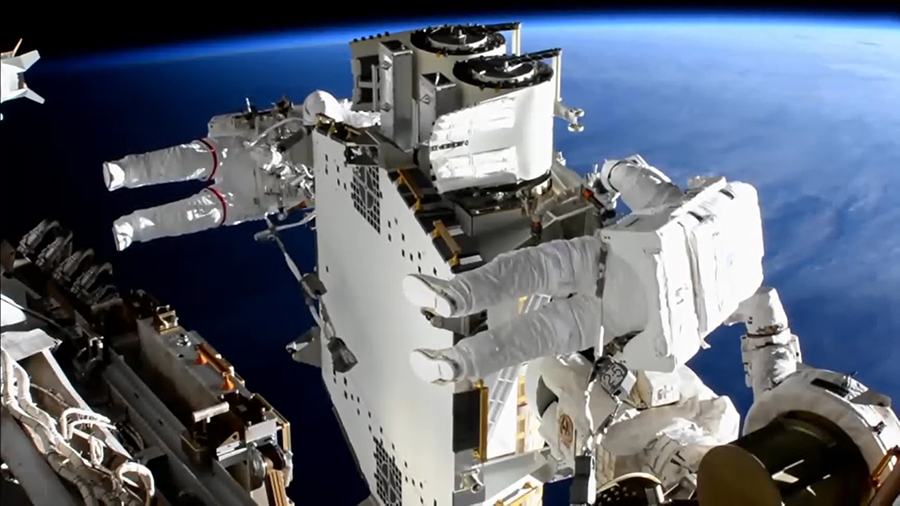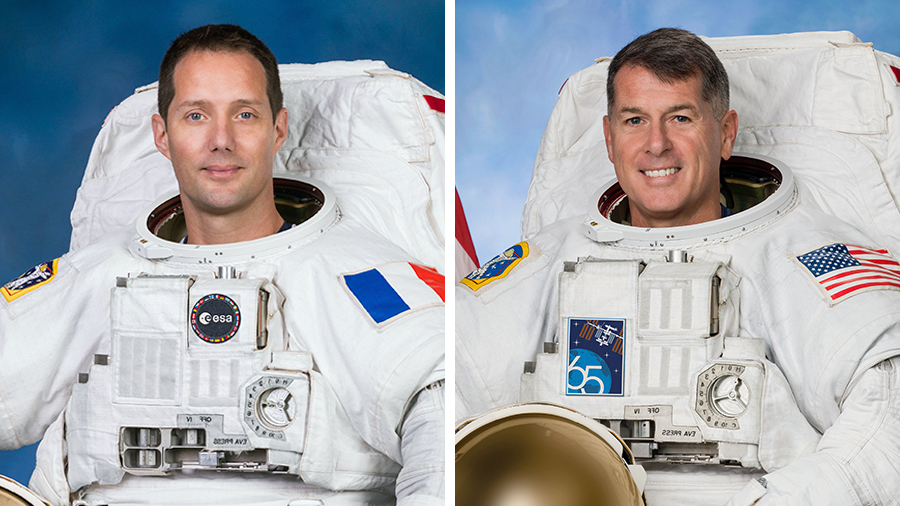Spacewalkers Complete First Roll Out Solar Array Installation

NASA astronaut Shane Kimbrough and ESA (European Space Agency) astronaut Thomas Pesquet concluded their spacewalk at 2:10 p.m. EDT, after 6 hours and 28 minutes. In the eighth spacewalk of the year outside the International Space Station, the two astronauts completed the deployment of a new ISS Roll-Out Solar Array (iROSA) on the far end of the left (port) side of the station’s backbone truss structure (P6).
The 60-foot-long roll out solar arrays have successfully deployed as the space station soared over the United States. #AskNASA | https://t.co/yuOTrYN8CV pic.twitter.com/6mQOQ2Fj5n
— International Space Station (@Space_Station) June 20, 2021
Kimbrough and Pesquet successfully unfolded the solar array, bolted it into place, and connected cables to the station’s power supply to complete deployment. Additionally, the astronauts removed and stowed hardware in preparation for releasing the second iROSA from the flight support structure for installation. The pair will work toward the second solar array upgrade – this one on the P6 truss’ 4B power channel – during another spacewalk, tentatively scheduled for June 25.
NASA is augmenting six of the eight existing power channels of the space station with new solar arrays to ensure a sufficient power supply is maintained for NASA’s exploration technology demonstrations for Artemis and beyond as well as utilization and commercialization.
This was the eighth spacewalk for Kimbrough, the fourth for Pesquet, and the fourth they have conducted together. Kimbrough has now spent a total of 52 hours and 43 minutes spacewalking, and Pesquet’s total spacewalking time is 26 hours and 15 minutes.
Space station crew members have conducted 240 spacewalks in support of assembly and maintenance of the orbiting laboratory. Spacewalkers have now spent a total of 63 days and 56 minutes working outside the station.
In November 2020, the International Space Station surpassed its 20-year milestone of continuous human presence, providing opportunities for unique research and technological demonstrations that help prepare for long-duration missions to the Moon and Mars and also improve life on Earth. In that time, 244 people from 19 countries have visited the orbiting laboratory that has hosted nearly 3,000 research investigations from researchers in 108 countries and areas.
Learn more about station activities by following the space station blog, @space_station and @ISS_Research on Twitter as well as the ISS Facebook and ISS Instagram accounts.
Mark Garcia
Powered by WPeMatico







